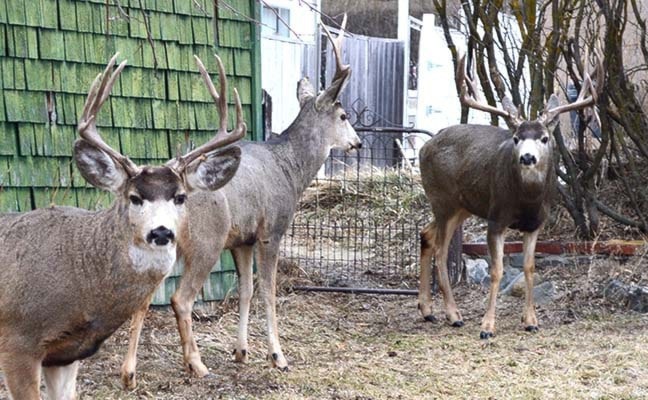When it comes to the problem of urban deer, some communities, including Cranbrook, have turned to culls as a solution, if not a temporary one.
And if you don't believe they're a problem, go to Youtube and search for a Cranbrook incident where a deer beat the crap out of someone's dog.
Imagine if that had been a child.
Communities across the province, including Cranbrook and Invermere and now Oak Bay on Vancouver Island, have completed culls in the past or are looking at culls as a solution to urbanized deer.
Culls work in the sense that the urban deer population is suddenly and immediately reduced, however, over time, the urban deer population will come back up as animals wander into town from the outskirts.
In other words, culls are a short-term solution for an ongoing issue.
Municipalities dealing with urbanized deer are caught in a bind, because under the Wildlife Act, the province has jurisdiction over the issue and municipalities need provincial approval to undertake any kind of action.
Culls are an emotionally-charged issue — one only has to look at cases where deer traps were deliberately damaged by vandals in Kimberley and Cranbrook last year.
Plus, there's the cost. Cranbrook has a permit to cull 50 deer, but city council is estimating a cost of $500 to cull a deer, with a budget of $12,750.
That adds up to only 25 animals.
Some argue why translocation isn't being considered. After all, it seems like an easy enough solution to tranquilize the deer and move them out to the wild.
However, according to Jeff Morgan, the Manager of Policy with the Fish and Wildlife Branch, it's not so simple.
Translocation of ungulates, including animals such as deer, elk and caribou, isn't without it's challenges, he said.
"One is the trauma that can occur during the capture and handling processes themselves, so the deer can be breaking limbs and injuring themselves through that process," said Morgan.
"Then the other one is capture-myopathy — that's the term — basically it sets itself up under stressful conditions where the deer are exerting themselves and exerting their muscles in an environment within their body that is low on oxygen. And that can cause serious degeneration of muscle tissue and death, and that is very prominent in deer."
Morgan adds that surviving in a wild environment is also more challenging for translocated urbanized deer.
“As you can imagine, the animals might not be familiar with that area, they’re very adapted to the environment they’ve been living in and when moved to a whole new environment, they are really at a disadvantage to other animals — especially if they’re urban deer because they might be quite naive when it comes to predators.”
Even with those challenges, why doesn’t the province allow Kootenay communities to translocate deer, especially when the mule deer population is struggling?
Again, it’s not as easy as it sounds, according to Morgan.
He confirms that mule deer numbers are 50 per cent below historic levels, which is a result of winter severity, disease and parasites, predation and their ability to recruit young animals into the population. However, adding a few dozen urbanized deer into the wilderness will have a pretty negligible effect on the overall population numbers, he added.
“We estimate that there are between 10,000 and 20,000 [mule deer] in the Kootenay region, so moving a relatively small number of animals to one area or another, is not likely to result in any significant population increase,” Morgan said.
“There are viable populations throughout the Kootenay region as is and they are in equilibrium with their environment and unless those underlying factors that control the population densities are changed, we wouldn’t expect the populations to increase.”
All that being said, the province is keeping a close eye on a study looking at the mortality rates of deer translocation that involves communities such as Sparwood, Elkford and Cranbrook.
“The information that we have been exposed to suggests that translocations of deer causes high mortality rates within the deer that are translocated,” said Morgan. “The mortality can range from 25 to 85 per cent of the deer that are released at a new site. When we looked at that research, it was borne out that 50 per cent or greater mortality occurred in seven of the 12 papers that we reviewed.
“The important thing to note is that there’s always advancement in techniques and there are some projects going on in the States where they are using different drugs to reduce stress levels during capture and transport.
“We have an opportunity and this is where the province is happy to participate—we have an opportunity to learn from some of the more recent work and set about to conduct a scientifically rigorous research trial in British Columbia in the Kootenay region.”
